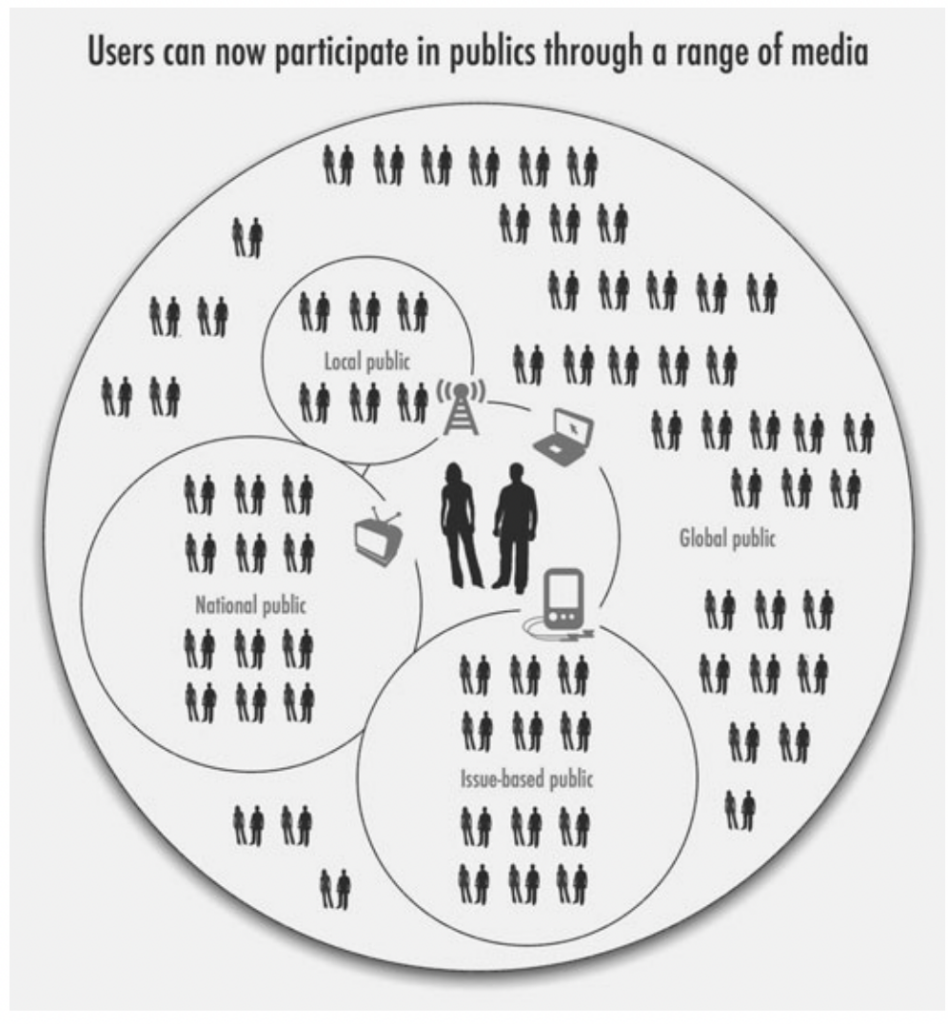With the people-centric public media model we are experiencing, the social platforms we use are catered to the needs of the individual (Clark and Aufderheide 58). This means that you get to use your platforms in whichever way best fits you! However, this can get tricky when people don’t take stock of what it is they actually want to do with their social platforms. Often I will be sucked down the social media sink hole and spend too much time aimlessly browsing content I care nothing about. So, this model centered around the individual is great, but it also means it is the responsibility of the individual to check in with themselves and their usage of media platforms in order to best use the resources available to them.
Community engagement is a great way to use your social media platforms. “Social networks are increasingly common platforms for distribution” (Clark and Aufderheide 58). Being able to share good things happening in your community, as well as raise awareness for impactful causes, can be done so much more efficiently when you reach out to your PLN. And I think it is important to note that these two things don’t need to be mutually exclusive. You can talk about good things while also discussing ways to further improve. Too often awareness for social issues is painted in panic and blame, as opposed to the concern and hope I think it usually stems from. Markiel Simpson talked about how instead of yelling at everyone, it’s meeting people where they are at and trying to make productive change. These words really resonated with me, and think it’s something that needs to be put in practice more often.

Another aspect of sharing messages through social media is displayed in Figure 4.2 of the Clark and Aufderheide article. Not every message will appeal (or even be applicable) to every person on the web. But there are different groupings of people that are connected by region, interest, profession, education, common goal, and other categories. Simpson mentions that different posts deal with different subjects, which mean they will appeal to different people. He mentions this in reference to himself as an example, meaning even within his PLN a message he shares may be more applicable to some of his followers than others. But Simpson emphasizes that this is totally normal. It just means to utilize the variation within your PLN you need to amplify your message within its niche. Not all messages will have the same reach, and that’s okay.
Social platforms are a great way to share messages within your many communities and PLN. Users of these platforms will have the greatest success when they remain aware of the intentions behind their usage. Then, users can spread messages they believe are important for their community and share those messages in productive way.
Works Cited
Clark, Jessica, and Patricia Aufderheide. “A New Vision for Public Media.” Media and Social Justice, 2011, pp. 55–67. Crossref, doi:10.1057/9780230119796_5.
MILLER. “EDCI – 338 MARKIEL SIMPSON.” YouTube, uploaded by EDCI – 338 MARKIEL SIMPSON, 2 June 2021, www.youtube.com/watch?v=rsoDHGaXNNs.
Leave a Reply